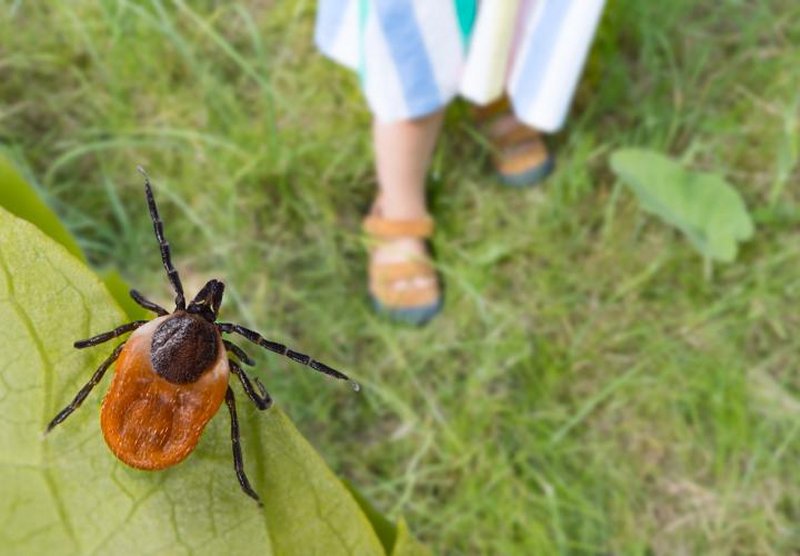Canada, with its diverse ecosystems and sprawling landscapes, provides a hospitable environment for a variety of wildlife, including ticks. While these tiny arachnids have always been a part of the Canadian landscape, recent years have seen a noticeable increase in their population and geographical range, raising concerns about the potential health risks they pose to both humans and animals.
This article aims to provide a comprehensive overview of the rising tick populations in Canada, the types of ticks you should be aware of, the diseases they can transmit, and crucial preventative measures you can take to protect yourself and your loved ones.
The Rise of Canadian Ticks: Understanding the Contributing Factors
Several factors contribute to the increasing tick populations and their expanding range across Canada:
- Climate Change: Warmer temperatures and milder winters create a more favorable environment for ticks to survive and thrive. Extended periods of above-freezing temperatures allow ticks to remain active for longer periods, leading to increased opportunities for feeding and reproduction.
- Host Availability: Ticks rely on host animals, such as deer, rodents, and birds, for their survival and reproduction. Expanding populations of these host animals, coupled with their movement across the landscape, contribute to the spread of ticks to new areas.
- Habitat Changes: Deforestation, urbanization, and agricultural practices can alter habitats in ways that favor tick populations. These changes can disrupt natural predator-prey relationships, allowing tick populations to flourish.
- Migration Patterns: Migratory birds can carry ticks long distances, introducing them to new regions where they can establish themselves. This is particularly relevant for the spread of invasive tick species.
Identifying the Key Tick Species in Canada
While several tick species can be found in Canada, some are more prevalent and pose a greater risk to human and animal health. Familiarizing yourself with these key species is crucial for identification and appropriate preventative measures:
- Blacklegged Tick: Also known as the deer tick, the blacklegged tick is the primary vector of Lyme disease in Canada. It is most commonly found in southern parts of the country, including Ontario, Manitoba, Quebec, Nova Scotia, and New Brunswick, but its range is expanding northward. Adult blacklegged ticks are small, with a flattened, oval-shaped body. Females are reddish-brown with a black shield behind the head, while males are almost entirely black.
- American Dog Tick: As the name suggests, the American dog tick commonly infests dogs, but it can also bite humans. It is found across Canada, particularly in grassy and wooded areas. American dog ticks are larger than blacklegged ticks and have distinctive white or light-colored markings on their shield.
- Rocky Mountain Wood Tick: This tick species is primarily found in western Canada, particularly in British Columbia, Alberta, and Saskatchewan. It is often found in grassy or wooded areas at higher elevations. The Rocky Mountain wood tick is similar in appearance to the American dog tick, with white or light-colored markings on its shield.
- Brown Dog Tick: This tick is unique in that it can complete its entire life cycle indoors, making it a common nuisance in homes and kennels. It prefers warm climates and is more prevalent in southern regions of Canada. The brown dog tick is reddish-brown in color and has a slender, elongated body.
- Lone Star Tick: While not yet widely established in Canada, the lone star tick is increasingly being detected in some areas, particularly in southern Ontario. It is distinguished by a prominent white spot on the back of the female, hence the name "lone star." Lone star ticks are aggressive biters and can transmit several diseases.
The Dangers of Tick Bites: Understanding Tick-borne Diseases
Ticks can transmit a variety of diseases to humans and animals through their bites. These diseases can range from mild to severe and can have long-lasting health consequences if left untreated.
- Lyme Disease: Lyme disease is the most common tick-borne illness in Canada and is caused by the bacterium Borrelia burgdorferi. Transmitted by the blacklegged tick, Lyme disease can cause a range of symptoms, including fever, fatigue, headache, muscle and joint pain, and a characteristic "bullseye" rash around the site of the bite. If left untreated, Lyme disease can lead to serious complications affecting the heart, nervous system, and joints.
- Rocky Mountain Spotted Fever: Transmitted by the Rocky Mountain wood tick and the American dog tick, Rocky Mountain spotted fever is a bacterial infection that can cause fever, headache, muscle pain, and a characteristic spotted rash. It can be fatal if not treated promptly with antibiotics.
- Ehrlichiosis: This bacterial infection is transmitted by the lone star tick and can cause fever, headache, muscle pain, and fatigue. In severe cases, ehrlichiosis can lead to organ damage and even death.
- Anaplasmosis: Another bacterial infection transmitted by the blacklegged tick, anaplasmosis can cause similar symptoms to ehrlichiosis, including fever, headache, muscle pain, and fatigue.
- Tick Paralysis: Certain tick species, including the Rocky Mountain wood tick and the American dog tick, can produce a toxin that causes paralysis in humans and animals. The paralysis typically starts in the legs and can progress to the respiratory muscles, leading to breathing difficulties. Removing the tick usually resolves the paralysis.
- Alpha-gal Syndrome: Lone star tick bites have been linked to the development of alpha-gal syndrome, a condition that causes an allergic reaction to red meat and other mammalian products.
Protecting Yourself from Ticks: Prevention is Key
The best way to protect yourself from tick-borne diseases is to prevent tick bites in the first place. Here are some essential preventative measures you can take:
- Wear protective clothing: When venturing into grassy or wooded areas, wear long-sleeved shirts, long pants, and closed-toe shoes. Tuck your pants into your socks or boots to prevent ticks from crawling up your legs.
- Use insect repellent: Apply insect repellent containing DEET or Icaridin to your skin and clothing, following the manufacturer's instructions.
- Stay on marked trails: When hiking or walking in natural areas, stick to well-maintained trails and avoid walking through tall grass or bushes.
- Check yourself and your pets for ticks: After spending time outdoors, thoroughly check yourself, your children, and your pets for ticks. Pay close attention to areas such as the hairline, behind the ears, in the armpits, and around the groin.
- Remove ticks promptly and properly: If you find a tick attached to your skin, remove it carefully using fine-tipped tweezers. Grasp the tick as close to the skin as possible and pull it straight out with a steady motion. Avoid twisting or crushing the tick. Disinfect the bite area with soap and water or an antiseptic.
- Maintain your yard: Keep your lawn mowed short and clear away brush and leaf litter to reduce tick habitats around your home.
- Consider tick control measures: If you live in an area with a high tick population, consider using tick control measures, such as insecticide sprays or tick tubes, to reduce the number of ticks in your yard.
- Consult a healthcare professional: If you develop symptoms of a tick-borne illness after being bitten by a tick, consult a healthcare professional. Early diagnosis and treatment are crucial for preventing serious complications.
Conclusion
Ticks are becoming increasingly prevalent in Canada, posing a growing threat to human and animal health. By understanding the factors contributing to the rise of tick populations, identifying the key tick species in your area, and taking preventative measures to avoid tick bites, you can protect yourself and your loved ones from tick-borne diseases. Stay informed, be vigilant, and take proactive steps to ensure a safe and healthy outdoor experience.
Word Count: 1,372

Mark Daniels
Mark demonstrates exceptional writing skills, showcasing his talent for creating captivating and engaging content on various subjects. In his leisure time, he indulges in his interests in camping and fishing.






Leave a comment?
To write a comment, you must login or register first.